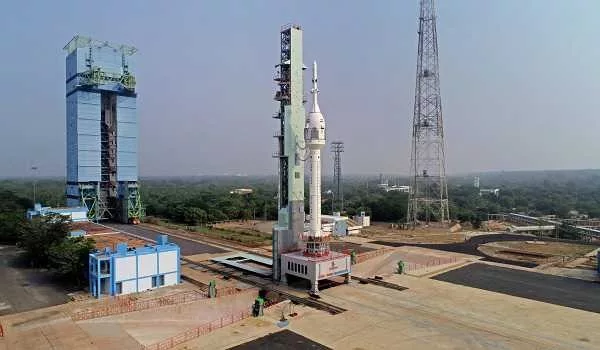India’s Gaganyaan Mission Takes Flight: Unmanned Test Launching at 7:30 PM Today

India's Gaganyaan Mission Takes Flight: Unmanned Test Launching at 7:30 PM Today
Chennai, October 20 ,
The clock is ticking with a 12.5-hour countdown underway for the commencement of the first unmanned Flight Test Vehicle Abort Mission-1 (TV-D1) at 7:30 PM this Friday evening. This mission is a pivotal component of the Gaganyaan program and is designed to demonstrate the crew escape system. The actual launch is scheduled for 8:00 AM on Saturday morning from the First Launch Pad at the SHAR Range in Sriharikota.
According to the Indian Space Research Organisation (ISRO), this short-duration mission will span approximately 531 seconds, equivalent to about nine minutes. It represents a significant milestone in the Gaganyaan program, India’s maiden mission with human astronauts, and aims to showcase the in-flight abort demonstration of the Crew Escape System (CES) at Mach Number 1.2. The test will involve the newly developed Test Vehicle, followed by Crew Module Separation and Recovery.
The primary objective of this mission is to demonstrate and evaluate the sub-systems of the Test Vehicle, the Crew Escape System, various separation systems, and the characteristics of the Crew Module at higher altitudes. It will also provide insights into the deceleration systems and their performance during recovery.
The 35-meter-tall Liquid Propelled Single Stage Test Vehicle, weighing around 44 tons, is equipped with a modified Vikas engine and carries a 4,520 kg Crew Module (CM), a single-walled unpressurized aluminum structure, along with the CES mounted at its front.
ISRO has outlined the entire flight sequence, which includes liftoff from the First Launch Pad and concludes with the safe touchdown of the Crew Module at sea, approximately 10 kilometers from Sriharikota. The process includes the deployment of parachutes to ensure a safe descent.
About 60 seconds after liftoff, the crew escape system will separate at an altitude of 11.7 km. Approximately 30 seconds later, the Crew Module with the Crew Escape System will separate at an altitude of 16.7 km while traveling at a velocity of 148.7 m/s. Subsequently, the autonomous abort sequence will initiate, starting with the separation of the Crew Escape System and the deployment of a series of parachutes. The mission will conclude with the safe retrieval of the Crew Module from the sea, approximately 10 kilometers off the coast of Sriharikota. The Indian Navy will be responsible for recovering the Crew Module, with recovery ships and a team of divers facilitating its return to shore.









